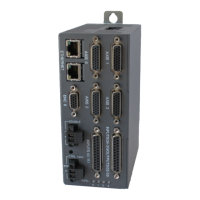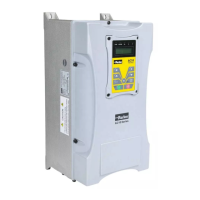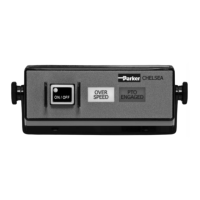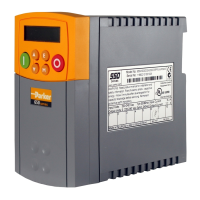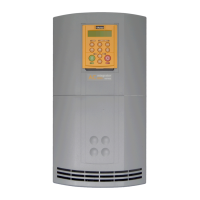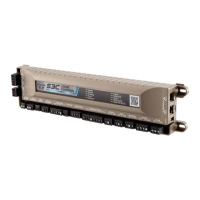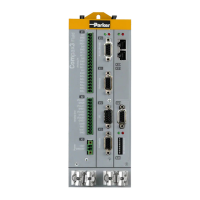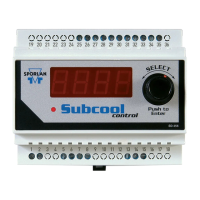Parker Hannifin
- 98 – Aries Controller Hardware Installation Guide
Energy to Dissipate in the External Power-Dump
Resistor
To stop a motor, kinetic and potential energy must go somewhere. Through
the previous calculations, you have determined the total kinetic and potential
energy, and the energy lost to various paths.
From the total kinetic and potential energy, subtract the energy dissipated
through the drive capacitors, motor windings, and load loss. If the copper
losses (E
W
) or load losses (E
L
) are not easily determined, you can
conservatively assume they are zero (Ø).
The resulting sum represents the power for dissipation in an external power
dump resistor.
LWCPKR
EEEEEE
Where
E
R
= energy to be dissipated in the external resistor (Joules)
E
K
= rotational kinetic energy (Joules)
E
P
= potential energy (Joules)
E
C
= energy that can be absorbed by the drive capacitors (Joules)
E
W
= energy dissipated in the motor windings (Joules) – copper losses
E
L
= energy dissipated by the load (Joules) – load losses
Resistor Specifications—Linear Motors
Having determined the amount of energy to dump (E
R
), you can then
calculate the resistor specifications.
• Maximum resistance
• Peak dissipation
• Average dissipation
Maximum Resistance
This calculation determines the maximum value of resistance needed for the
external power-dump resistor. We recommend that you select a lower value
resistance, typically in the 22 to 100 ohm range.
Important — It is possible to overload a drive/controller or the combination
of a drive/controller and power dump resistor.
If, at the end of the calculations, you find the required resistor is less than
allowed for your specific Aries Controller model, or requires a wattage rating
greater than the rated resistors available, do not use the unit in your
application.
Drive/controller models AR-04CE, AR-08CE, and AR-13CE require external
resistance values of 22 Ohms or greater.

